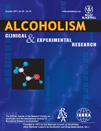Commentary on Rossheim and Thombs (2011): Artificial Sweeteners, Caffeine, and Alcohol Intoxication in Bar Patrons
Abstract
Background: This commentary discusses the paper by Rossheim and Thombs (Alcohol Clin Exp Res 35, 2011), which examined the relationship between type of alcohol mixer (regular caffeinated cola, diet caffeinated cola, energy drink, or no mixer) and breath alcohol readings in bar patrons.
Methods: The significance of the findings of this study and new unaddressed questions for the field are discussed.
Results: Rossheim and Thombs (2011) reported that breath alcohol concentration readings were highest when patrons reported the consumption of caffeine mixers that were artificially sweetened (i.e., diet cola), after adjusting for potential confounds. Women were more likely to consume diet cola-caffeinated mixed drinks.
Conclusions: The findings from this field study raise several new interesting questions. Given the reported gender difference in consumption of diet cola-caffeinated mixed drinks, more research is needed regarding gender differences in gastric emptying time for alcoholic beverages mixed with artificially sweetened versus sucrose sweetened caffeinated drinks. In addition, the recent explosion in the energy drink market has resulted in the availability of sugar-free or diet versions of most energy drink products. The implications of mixing diet energy drinks with alcohol are unknown.




